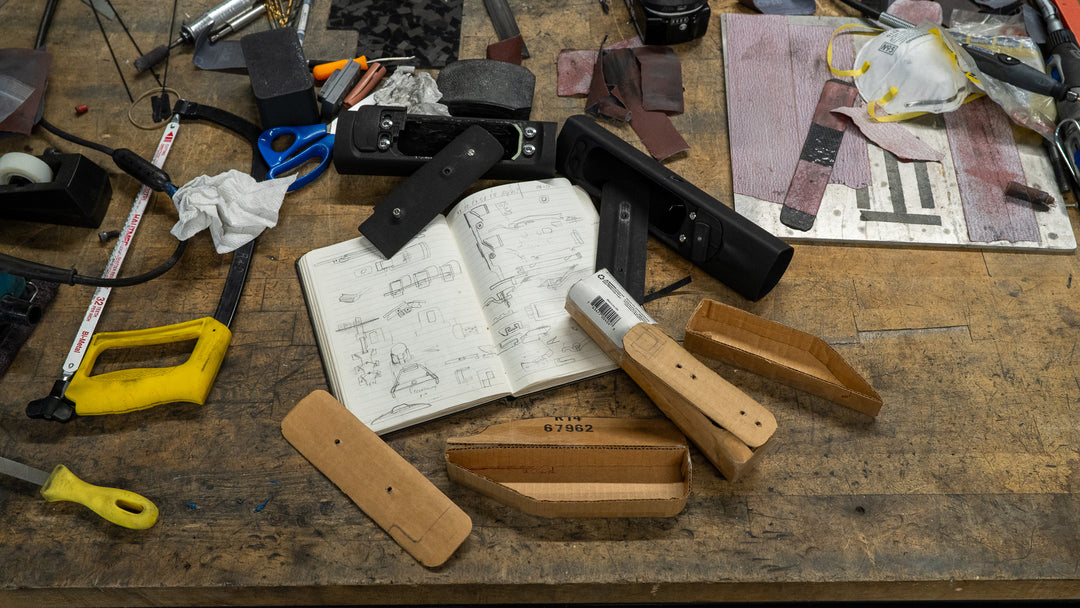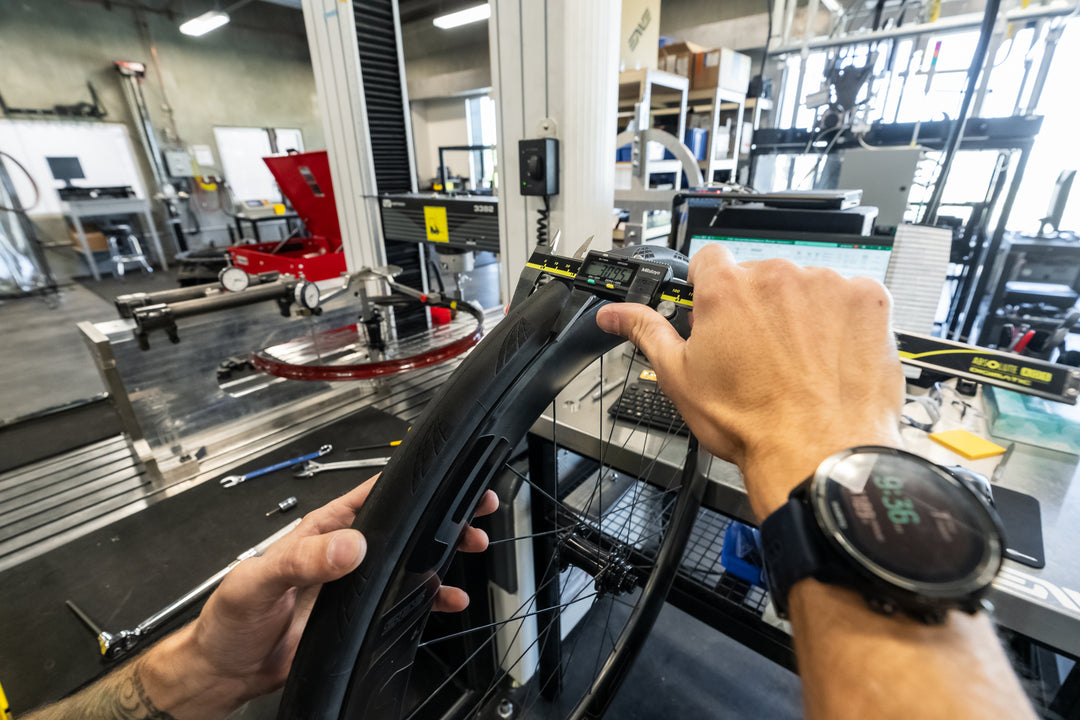Riding with Team Dimension Data
In 2014, just as ENVE was looking for a special team to sponsor, one with a true purpose beyond results, Team Dimension Data principle Doug Ryder asked his riders which wheels they wanted to ride the following season. ‘ENVE,’ they told him. It was a perfect match and a true partnership was born, one that transcends even the racing success and critical product development. Now, as the team embarks on a new challenge to place an African rider on the podium of the Tour de France by 2020, we take you inside the team throughout the winter to find out how they’re working towards that goal. Stay tuned for new stories every week.
Back in November I was lucky enough to spend a week at Dimension Data’s first team camp of the winter in Cape Town, South Africa. Even better, I had the privilege of riding with the team most days. Here’s a taste of that experience.
It seems there are lots of different perceptions about how pros ride, going by the questions I get asked after trips such as this one. Are they super-fast all the time, or do they ride steady and save themselves for the serious training efforts? Can they enjoy their riding or are they especially cautious to avoid accidents and injuries? Do they ever just do a chilled ride to a coffee shop?
Happily, over the course of the week’s rides, I was able to discover the answers to all of those questions first hand.

Let’s start with the easy one – most pros love coffee and their recovery rides are as important as the savage interval sessions. Total rest days are rare because active recovery is more effective, so a barely-touching-the-pedals spin to a coffee shop is ideal to freshen the legs.
That’s exactly what Edvald Boasson Hagen has in mind to get the 17-hour flight from Oslo out of his legs on the first day, and he kindly invites ENVE’s Chief Design Engineer, Kevin Nelson, present on the camp to gather feedback from the team, and myself to join him. After a few visits to Cape Town, many of the riders have favourite coffee shops. Eddy, a real connoisseur, seems to know all of them. My Garmin has recorded exactly one mile when we stop at Shift Espresso on Main Road, with Signal Hill looming behind the buildings and the famous stadium between us and the Southern Atlantic Ocean in front. EBH orders a cappuccino and a bowl of yoghurt with granola; I have an espresso that proves entirely unnecessary for the very easy two-hour ride that follows. My heart rate averages 116bpm so I doubt Eddy’s hit triple digits. We cruise, chat, and enjoy the sun.

It’s a different story the next day when the whole team heads out together for a photo and video session, with us and some other guests tagging along and trying to stay out of the way. The team rides in two neat lines for the cameras on the way out, then, with the shoot complete at the view point atop Chapman’s Peak, the members of one of the world’s most winning teams turn into a bunch of juniors and race each other back down. A little later, as the regrouped bunch rolls away from the last set of lights out of Hout Bay, we’re suddenly strung out into the climb. “I bet that’s Cav,” says a voice behind me, Renshaw’s I think. I figure he’s joking; Cav hates hill, no? With a big effort, I get up near the front and, sure enough, it’s the Manxman, supposed terrible climber, who is driving the pace and shelling first all the staff and then a fair few of his teammates who don’t feel like going that deep today, and all for mischief’s sake. On the other hand, I’m in ‘death before dropped’ mode. I’m on the wheel of British champion and general legend Steve Cummings and that’s too special a thing to give up. By the top, I’m absolutely on my limit but still with them and grinning. I can see the guys ahead are working hard, though I suspect that they could do this over and over.

The dial is turned up another notch the day after when we join Lachlan Morton, Scott Thwaites and DS Roger Hammond on a ride. It starts casually enough, but 40 minutes in, as we reach the foot of Chapman’s Peak, with Thwaites and myself on the front, the Yorkshireman accelerates purposefully and without warning. I’d been careful not to half-wheel him so this isn’t a slap down, I think he simply wants to test his legs, and maybe mine, too. As I’m literally in the best shape of my life, I resolve to stay alongside him for as long as I can but he keeps ratcheting up the power, just like a ramp test. In the last couple of kms I have to relent and get on his wheel, heart rate at aerobic max, but I survive to the end of the 11-minute climb. I’m surprised. He is, too, having hit 200bpm. I may have clung on, but he was doing far more work at the end. What’s more, after we have regrouped and rolled back down, Thwaites loops back for another go. That’s the real difference, the capacity of pros to repeat big efforts and to produce that power after 200km. A one-off blast up a hill from fresh flatters the amateur.
There’s a bit more pain to come, though, as Lachlan introduces us to the steep climb of The Glen. Despite being just a couple of days back into training after his post-season break, the Australian climber makes short work of the 10% grades. “This is a nice pace,” he says, around halfway up. “Okay,” I gasp, glancing at his computer. It says 350W. That’s ‘nice’ to a pro.
Lachlan is another coffee fiend. His favorite shop is closed so he takes us to his back-up option. It has a relaxed, off-the-wall feel that suits the Australian perfectly. There are too many people smoking for my liking but the soya flat white is undeniable. We chat about his unusual journey through the sport (“I won a junior title while on holiday in America and got on the Garmin development squad”), to life on this team (“It has a great vibe, it’s quite chilled”), and his Grand Tour debut (“So hard. You’re just super tired. It feels like you’ve only had three hours sleep even if you’ve had nine”). Sufficiently revived to negotiate Cape Town’s hectic streets, we roll back to the hotel.
So far, each of these rides has followed an identical route down the M6 coast road, over the Suikerbossie ridge and down into the town of Hout Bay, and then up the deceptively hard drag to Chapman’s Peak, overlooking the bay itself. To head in any other direction from the city centre would mean miles of urban sprawl and the traffic is too gnarly for that. Thankfully, what Cape Town lacks in quantity it makes up for in quality – this is a stunning road, with fun, writhing descents, climbs that can be made to hurt or cruised as you please, and incredible views. There’s no chance of getting bored in a week.

Even so, on the Wednesday, while the riders are all having their medicals, I take the chance to get in a longer ride, all the way down to the Cape of Good Hope. It’s an intensely South African experience. Approaching Noordhoek, into uncharted territory after the week’s earlier rides, I briefly ride and chat with a local rider in Dimension Data kit who tells me he’d raced for the development team for a year. A few minutes later I meet another rider, who turns out to be Mark Cheyne, the composer of the Qhubeka charity’s song, Qubaquba, who is at the camp as a special guest. As we pedal, he tells me how the song came about:
“I’m a music producer, writing jingles and songs for corporations, and a fan of the team. I had this idea for a Qhubeka song. A friend of mine had (Qhubeka founder) Anthony Fitzhenry’s number and when I called him on a Monday he said he had chills because it was on his job list for that day to look into a song. When I played him a demo, he teared up. The song is in Zulu and Qubaquba means ‘pedal pedal’, an encouragement, just like ‘Allez!’ in French.”
When our routes diverge, it’s just me and my bike. Appropriately, I’m riding a Swift Ultravox TI, loaned to me by friend and Swift founder Mark Blewett. The South African former pro rode 10,600km from Cairo to Cape Town in 2015, taking just 38 days and smashing the previous record.
The most direct route to the Cape takes me across to the east coast of the peninsula, where the wind gets even stronger. It’s a hard slog down the coast, up into the pretty Table Mountain National Park, and then down the increasingly exposed road to the tip, the sea close on both sides now.
The Cape of Good Hope itself is something of an anti-climax. There’s nothing there except for a sign proclaiming it as the continent’s most south-westerly point, a slightly stretched claim to fame because while it’s Africa’s most famous extremity, it isn’t the southern tip. I’d been hoping for a gift shop to buy a can of Coke and a postcard.
As I turn north for Cape Town, progress is brisk with the wind finally at my back, though it’s also blowing in great, dark walls of rain. They’re visible from miles away, giving me time to don my gilet and brace myself for another soaking.
Nearing home, the skies clear once more. At an intersection I stop next to a school bus packed with kids singing their hearts out in a traditional harmony. It might be the most joyful thing I’ve ever heard. That’s South Africa right there: it’s been through some dark times and it’s hoping for a brighter tomorrow.











